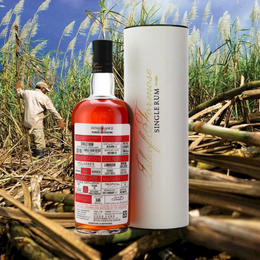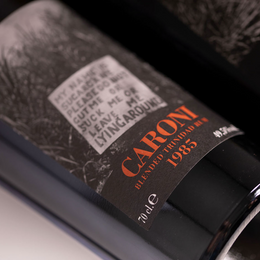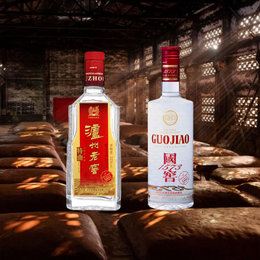Distillery Spotlight: Kavalan Distillery
Region: Yilan County, Taiwan
Note: Our Distillery Spotlight articles discuss how each distillery's unique process results in the distinctive flavour profiles of their whisky. To find out more about each step of the whisky-making process, check out our Basics Series article on how to distil the elixir of life.

Kavalan taking the world by storm. (Image Source: Boozeat)
A distillery that would change the map of whisky
Before 2010, there were 5 whisky producing regions, officially laid out in the Malt Whisky Yearbook. They were Scotland, Ireland, America, Canada, and Japan. Then something remarkable happened, that no one in the whisky world had seen in a long while - a new whisky producing region was officially added: Taiwan.
Now you might be scratching your head wondering what Taiwan has to offer in the way of whisky. After all you would not be wrong if you found it difficult to name more than 3 distilleries from Taiwan. In fact you’d be right, in 2010 when Taiwan was officially named a whisky producing region, it was home to only one distillery: Kavalan.

Taiwan was inaugurated in 2010 as a whisky producing region. (Image Source: Kavalan)
Kavalan Distillery did something no other distillery can lay claim to. It singlehandedly lifted a country (or region) to official designation as a whisky producing region. This is even more incredible considering that Kavalan had only completed its distillery in 2006 and only started making whiskies in 2008.
Fun Fact: Taiwan is the third largest consumer of single malt whiskies, behind France and US.
In 3 years, Kavalan was able to accomplish this incredible feat. Follow on as we dive into the wild tale of how a root beer maker turned coffee supplier came to establish an award-winning distillery. All of which flew in the face of a government that had attempted to thwart its existence.

Kavalan Distillery is located in Yilan County, Taiwan. (Image Source: CNN)
From Root Beer to Coffee
Kavalan has today cemented itself as a distillery to be taken seriously, producing more than 9 million liters of whisky annually. This places it amongst the ranks of the largest single malt whisky distilleries in the world. Along the way it has picked up more than 200 first prize awards since the first competition it entered in 2010.
But before there was Kavalan, there was King Car.

King Car’s logo is commonplace in Taiwan and actually translates to “Driving Wealth” in Mandarin Chinese. (Image Source: King Car Group)
King Car was started in 1979 by Lee Tien-Tsai as a supplier of root beer in Taiwan. However, it soon became apparent that root beer was simply not lucrative, and so in 1982, King Car shifted its focus on something else that was gaining in popularity: coffee.
On the advice of a Japanese mentor, Lee had pivoted his business to producing canned coffee under the brand Mr. Brown. The name alone bears local significance – it is the first foreign surname Taiwanese students are taught as part of their mandatory English curriculum.

Mr Brown canned coffee became a dominant player in the Taiwanese market. Try it the next time you go to Taiwan! (Image Source: Aiking)
In less than a decade, Mr. Brown was dominant in the Taiwanese packaged coffee market and was already exporting. By 1998, the Mr. Brown brand was expanded to physical cafes, with more than 50 outlets across Taiwan. Together with Starbucks, Mr. Brown coffee had entrenched an oligopoly on Taiwan’s coffeehouse scene.
Yet, Lee had his sights on a greater ambition: to enter the lucrative Taiwanese alcohol market.
An obstacle in the road: A century old state monopoly on alcohol
Up until that point, the state had a monopoly on the production of alcohol which it found wildly profitable. This was run through the Taiwan Tobacco and Liquor Corporation (abbreviated as “TTL”), which at the time was chiefly focused on the production and distribution of Taiwan Beer.
In 1995, King Car had mounted a bid to enter the alcohol market for the first time but unsurprisingly, their plans were quickly rebuffed by the government.

The TTL is housed in the Monopoly Bureau Building, a Renaissance-styled building with a noticeably red brick exposed exterior that was built in 1913. (Image Source: Taiwan Today)
Now keep in mind, what the 15-year-old King Car was facing was not just any obstacle; it was confronting an almost century old institution that hoisted the Taiwanese economy. It did so by means of sanctioning taxable and therefore highly profitable products from cigarettes to alcohol. At one point, the TTL even monopolised the salt and opium trade in Taiwan.
It was at the time the sole producer of beer in Taiwan with more than 650 million cans of Taiwan Beer sold annually. This gave it an 82% market share of the local alcohol market. These numbers were no small matter; TTL was raking in more than $2.5bn USD for the local government every year.

Taiwan Beer was a highly lucrative trade for the TTL, responsible for bringing in more than $2.5bn USD annually for the Taiwanese government. (Image Source: Andwell Brewery)
It was no surprise then that King Car’s efforts to enter this lucrative market proved unsuccessful. The government had no desire to share its economic pie.
Yet as the world underwent a tremendous force known as globalisation, Taiwan would have little choice but to follow suit.
In 2002, as Taiwan joined the World Trade Organisation (WTO) following its signing of the WTO trade pact, it would begin to make preparations for the privatisation of the TTL. This was as it was no longer allowed to maintain its monopoly as per free trade policies.
The joining of the WTO meant that Taiwan had to embrace liberalised market policies. This meant allowing local companies to enter industries previously monopolised by the TTL.
King Car’s time had come.
From coffee king to whisky king
With the TTL out of the way, Lee and his son Albert, went straight to work.
Kavalan Distillery was established in 2005, with production lines ready in just 9 months and by 2008 had already began distillation. A top class of experts were brought onto the project, and a dedicated R&D team was set up, this included a direct line to renowned whisky specialist Dr Jim Swan.

The inaugural Kavalan, which you can still try today. (Image Source: Dekanta)
Within the year, Kavalan was already hitting the market with its first product, the Kavalan Classic Single Malt Whisky.
Whisky aficionados gawked at how fast it took – a single year to produce whisky ready for consumption. This flew in the face of Scotch stalwarts which required at least 3 years of aging to qualify as legal Scotch.
This was possible because Kavalan Distillery was located in Yilan County, an area known for its intense heat and humidity, coupled with sea and mountain breezes. Such a climate was conducive for accelerating whisky maturation.

The vast open spaces of Taiwan’s Yilan Country, was once home to the Kavalan people, after whom the distillery took its name. (Image Source: MelbTravel)
Yilan County was itself a historical site that was originally inhabited by indigenous Kavalan people, in particular an area called the Kabalan Plain. It was from this nod to its heritage that Kavalan Distillery got its name.
The faster maturation allowed Kavalan to take on intense and fruity flavors and yet remain smooth and easy on the palate. Such a desirable character would have otherwise been associated with more well-aged whiskies.
As with any newfound venture, Kavalan was not without its skeptics.
Yet, in a 2010 official blind tasting session organised by The Times, Kavalan had come out on top. This was especially important because it was paired up against three Scotches and one English whisky. The headline was enough to turn heads, “Taiwan whisky beats Scotch in blind taste test”.

Such a headline was sure to get Kavalan noticed. (Image Source: The Telegraph)
And yet, Albert, Lee’s son, who helms Kavalan personally, was not swayed.
“Let’s continue to lay low and keep an eye on what others are up to. Then catch up, or we will be left behind,” says Albert.
In 2016, just a decade after the distillery broke ground, Kavalan had already reached the pinnacle of whisky success. It had picked up both the International Wine & Spirit Competition (IWSC) Trophy for “Worldwide Whiskey Producer of the Year”. Its top shelf Solist Vinho Barrique made its way to bag the World Whiskies Awards’ top prize, the “World’s Best Single Malt” and the “Best Asian Single Malt” titles.

Award after award, there was no stopping Kavalan as they cracked the code.
Safe to say they did not stop there and continued on to pick up accolade after accolade, much to the amazement of skeptics who could not believe such a feat was possible.
It was indeed a hard earned and heartfelt journey that Lee and his son took in order to turn their bottled ambitions into a reality.
It is thus to Kavalan’s credit that Taiwan has achieved such resounding success in establishing itself as a bona fide whisky producing region.

Kavalan is the baby of Albert who had set out to make his father’s dreams a reality. (Image Source: Forbes)
Breaking down Kavalan’s flavors
Kavalan was designed for easy drinking
It is by no accident that Kavalan was able to rise to such acclaim in a relatively short span of time. Its flavour profile is sweet, floral and carries with it a fairly delicate and smooth texture that makes for easy drinking.
Whiskies often get a bad rep for being rough, medicinal and harsh on the palate, especially given its high abv. In comparison to other types of alcohol such as beers or wine, whisky is sometimes perceived as inaccessible to the palates of the uninitiated and takes much time to appreciate.
Often compared to fruit jam or honey, it is no surprise then that Kavalan’s whiskies has been so well-received.

Albert himself highlights that he “didn’t want their whisky to taste like medicine”, adding that Kavalan is designed to be very easy to go down.
This coupled with the fact that Taiwan does not impose regulations on whiskymaking, has allowed Kavalan to flourish.
Kavalan is free to create a huge variety of styles of whiskies, spanning more than 18 different styles from sweet to dry, and can also be bottled at a relatively young age. This was absolutely critical which you’ll later see why.

Kavalan spans more than 18 different styles for every palate. (Image Source: Angeltini)
Creamy and smooth texture
We pointed out earlier that Kavalan is located in Yilan County, south of the capital of Taipei, an area that is known for high temperatures and humidity.
Yet, Yilan County was nonetheless chosen because it offered vast open spaces, while also providing access to mineral-rich meltwater springs from the nearby Snow Mountain (or 雪山); water obviously being a critical ingredient for whiskymaking.

Taiwan’s Snow Mountains are home to the purest waters in the country. (Image Source: Taiwan-Adventures)
The waters from the spring are pure, creamy in texture and clean, allowing for a very smooth whisky.
In fact the spring water from the area are the purest in the country. The site at which Kavalan distillery is located at was originally intended to be King Car’s bottling plant for its “Green Time Natural Drinking Water” brand. The bottling plant for the water brand still exists at the same spot today!
Strong and intense flavors
The harsh Yilan County climate presented Albert with a very tricky environment for whiskymaking. As with sub-tropical climates, the area experiences large swings in temperature and humidity.
Daytime temperatures can run as high as 42 degree Celsius, while the cool, windy nights can drop as low as 26 degree Celsius. These swings, also known as differentials, are what is responsible for an accelerated maturation process of the whisky.

As Taiwan often experiences earthquakes, casks are bound 2x2 to improve stability. (Image Source: Changi Airport)
This results in Kavalan losing 12% of its volume via evaporation annually, versus Scotch which typically loses about 2% of volume. This effectively cuts down the maturation process for Kavalan to a third, hence a useful rule of thumb is that a 4 – 6 year old Kavalan is aged to the same extent as a 15 – 25 year old Scotch.
This accelerated maturation gives Kavalan a more intense flavour that comes off well aged and cohesive.
Blind tastings have often put Kavalan on par with much older whiskies and have fooled aficionados far more skilled than us with its well-married, deep, rich tones. It is after all a desriable characteristic that whiskies only take on after the distillate is able to “cool off” and settle in harmony with its cask, with the youthful alcoholic tinge receding.

Kavalan Distillery’s sub-tropical location poses a bag of challenges and opportunities, which the distillery has seized upon. (Image Source: The Spirits Business)
On the flipside, it is difficult for Kavalan to age whiskies beyond 4 – 6 years old without over-maturing the whisky. This would taste too woody or begin to take on a rougher, overly pungent flavour and texture.
Each additional year of aging also significantly reduces the volume of remaining whisky for bottling, resulting in small outturns.
Storage and controlled maturation obviously poses a significant challenge.
Thus it is absolutely essential that Kavalan is able to bottle whiskies at a younger age, unlike its Scotch counterparts. As a result, you’ll rarely spot a Kavalan with an age statement on it!
Fruity flavors galore!
As Taiwan is not naturally home to barley which cannot grow in its hot, humid climates; Kavalan imports malted barley from Scandinavia and its yeast from France. The grains and strains selected were designed to complement Kavalan’s distilling style and to help create a resulting smooth and fruity flavour.
 Barley from Scandinavia, experts from around the world, production in Taiwan, Kavalan’s success was an insurmountable effort. (Image Source: CNN)
Barley from Scandinavia, experts from around the world, production in Taiwan, Kavalan’s success was an insurmountable effort. (Image Source: CNN)
Kavalan also took several measures to perfect this flavour.
Temperature control jackets layer the washbacks in which the fermentation occurs, to ensure internal temperatures stay within the ranges needed to produce the ideal flavors.
Kavalan also utilises a double distillation process. The first cycle of distillation separates the alcohol and water. The second cycle can be broken down into three parts: the foreshot (the first spirit to come off the still), the heart, and thirdly, the feints (the final spirit from the still).
It is only the heart that is extracted.

Kavalan’s unique double distillation process is not too far off from its coffee-making roots. (Image Source: Remote Lands)
The sole use of the heart of the distillate ensures a consistent and robust flavour and texture, when distillation is in continuous full swing.
Interestingly this is a practice used by coffee baristas to ensure that your cup of coffee has the maximum flavour yet remains robust, without breaking apart into coffee and water on the palate.
In short it prevents the whisky (or coffee as well) from becoming watery or easily separated.

Fun Fact: Both Chichibu and Kavalan source their distillation stills from Forsyths. (Image Source: Sexy Fish Bar, CNA)
Deep and complex flavors
Much like its Asian counterparts, Kavalan has a deep focus on blending.
This is unsurprisingly because they are not bound to aging requirements or limited to specific types of casks that can be used. A key area in which their Scotch peers are regulated by.
This enables Kavalan and its Asian peers to engage in greater experimentation which inadvertently creates a variety of styles. All of which makes for great blends; after all you can’t blend a single style with more of the same style. Variety is the spice of life!

Master Blender Ian Chang has used his blending skills to take Kavalan to great heights. (Image Source: Forbes)
Much like Japanese distilleries, Kavalan too has their own Master Blender, Ian Chang, who is responsible for Kavalan’s final bottlings and its 200+ awards in the past decade.
In fact, blending is such a core element to Kavalan that if you made your way to the distillery’s compounds (which has won Visitor Attraction of the Year multiple times), you can try your own hand at blending at their DIY blending station.
It is through expert blending that Kavalan is able to marry various flavors to create a highly complex whisky.

With 18 different styles, Kavalan has made a name for itself with its wine cask finishes. (Image Source: Whisky Brother)
While many distilleries have built a reputation for using Sherry casks such as Yamazaki and Macallan, Kavalan is also unique in establishing themselves as experts with wine casks.
So if you’re having trouble picking out a Kavalan, going with a wine cask finish is probably a safe bet.
Our Take
Kavalan is truly an archetypal Asian whisky, many of whom share intense sweet and fruity flavors and have shun the preconceptions of herbaceous, smokier, rougher whiskies left by Scotch’s legacy.
We’ve taken a deep dive into attempting to understand the Asian palate, and we know that it is one that is a lot more gentle and delicate, with an overt preference for smooth and complex flavors.

Distilleries across Asia have altered the whisky map to suit palates closer to home.
It would make sense then that distilleries located in Asia cater to the local palate and hence take it upon themselves to redefine whiskies. To be sure, as Scotch makes its own inroads into Asia, and even to newer demographics (such as young adults and female drinkers), it has itself taken on some evolution to its flavors. It is simply a function of gaining mass appeal.
While some may find it hard to accept a whisky that does not carry with it an age statement but instead a hefty price tag, the Kavalan story is one of changing the world’s mind about what makes a good whisky.
As a fairly young distillery, it does have its ups and downs but you certainly can’t chalk it down for a lack of trying. We’ve definitely had some good Kavalan whiskies that would make you do a double take.

A bottle of Kavalan’s Solist Vinho Barrique makes its way to Hollywood; do we recall Suntory time’s Hollywood debut? (Image Source: Billions)
“The Taiwanese do it better than the Scots these days,”
United States Attorney Chuck Rhoades,
from the hit series Billions
Now are we willing to call it premium just yet? Frankly no. But have they been producing great whiskies? Yes.
Don’t for a second think our gripe is with the age (or lack thereof) of the whisky, it is simply that Kavalan in its pursuit of establishing itself, has produced expression after expression, having never taken a pause to create something truly magnificent; that is truly a concertmaster as they’ve called one of their expressions.

Dipping into our stash.
While it has not made the pantheons of whiskies in our books, it is well on its way there; all we need is for Kavalan to knock one right out of the park. And yes we have tried the Solist Vinho Barrique that was awarded “Best Single Malt Worldwide”.
At 9 million litres annually, Kavalan’s whiskies are still largely of mass appeal. So is it worth trying? Yes.
This is a whisky that you could easily gift your grandparents or your significant other’s parent’s for new years and not sport a sweat.
Our favorites:
Entry Level: Kavalan Classic Single Malt; Kavalan Distillery Select No. 1; Kavalan Distillery Select No. 2
Moderate: Kavalan Rum Cask French Connections; Kavalan Concertmaster Port Cask Finish; King Car Conductor
Top Shelf: Kavalan Solist Vinho Barrique; Kavalan Solist Amontillado; Kavalan Solist Manzanilla; Kavalan Sky Gold Wine Cask Matured

@111hotpot





